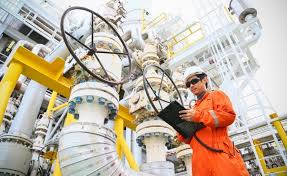Compressors Training Course

Course outline
Introduction to Compressors
- List the five kinds of air conditioning and refrigeration compressors.
- Contrast the operation of positive-displacement and kinetic-displacement compressors.
- Explain how each kind of the five kinds of compressor raises the pressure of the refrigerant vapor.
- Define staging and cascading and explain why each is used.
- List important considerations in compressor replacement.
Reciprocating Compressors
- Describe the general construction of open, semi-hermetic, and full-hermetic reciprocating compressors.
- Explain how the basic parts of a reciprocating compressor are assembled.
- Identify common designs of housings, pistons, connecting rods, crankshafts, bearings, seals, cylinder heads, and valves used in reciprocating
- Compressors.
- Explain how a cylinder unloader controls the capacity of a reciprocating compressor.
- Explain how compressors are lubricated.
- Explain how compressor vibration and noise are controlled.
Rotary, Helical, and Scroll Compressors
- Describe the operation of single-vane and multiple-vane rotary compressors, including how each raises refrigerant pressure.
- List several advantages of rotary compressors over reciprocating compressors.
- Define slugging and cavitation.
- Tell the two functions of an accumulator in a rotary compressor.
- Compare and contrast rotary and helical compressors.
- Describe the operation of the single-screw and twin-screw helical compressor.
- Describe the operation of a scroll compressor.
Centrifugal Compressors
- Describe the operating principle of a kinetic-displacement compressor.
- List advantages and disadvantages of centrifugal compressors as compared to positive-displacement types.
- Explain reverse hydrostatic sealing.
- Explain how centrifugal compressors deal with thrust forces.
- Trace the operation of a typical centrifugal compressor lubrication system.
- Tell the purpose of a purge system.
- Describe the capacity control methods used in centrifugal compressors.
Compressor Motors
- Explain the basic requirements of a compressor motor.
- Name the different types of single-phase and three-phase motors used to power compressors and tell which ones can be used in hermetic
- Compressors.
- Explain how to reverse the direction of rotation of a motor.
- Explain how to change voltages on a dual-voltage motor.
- Describe the operation of the current and potential relays used for starting single-phase hermetic compressor motors.
Compressor Control and Protection
- Name the two basic categories of motor-starting devices and tell how each operates.
- Explain the function of a reduced-voltage starter and name the five kinds used with compressor motors.
- Describe the three kinds of motor overload protection commonly used with compressor motors.
- Discuss the causes of, effects of, and solutions for high discharge pressure, low suction pressure, and low oil pressure.
- Explain the function of a suction-line accumulator.
- Explain why crankcase heaters are sometimes necessary.
- Explain how heat exchangers improve the performance of a compressor
Compressor Maint, Troubleshooting, & Repair
- State the first rule of preventive maintenance for compressors and related components.
- List preventive maintenance procedures common to most compressors.
- Explain how to calculate voltage imbalance in a three-phase motor.
- Name at least three possible causes of a low compressor oil level.
- Name at least three possible causes of compressor overheating.
- Explain how electrical problems can cause various system malfunctions
- Explain how to pump down a compressor for repairs.
- Describe compressor disassembly, cleaning, inspection, and reassembly procedures.
- Describe motor spot burnouts and cookouts, list their possible causes, and explain how to determ




